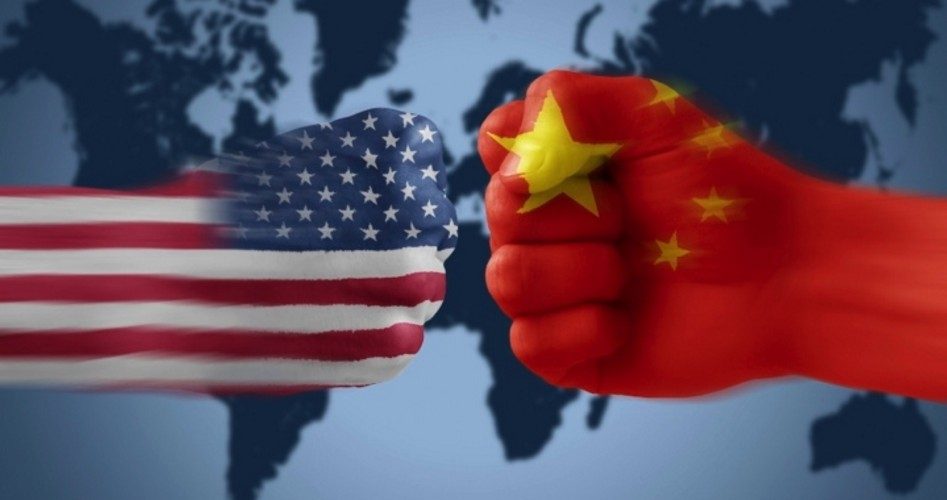
The Global Times, a newspaper owned by the Chinese Communist Party’s People’s Daily, said in an editorial on May 25 that “U.S.-China war is inevitable in the South China Sea … if the United States’ bottom line is that China has to halt its activities” in the disputed Spratly Islands. China calls the disputed territory the Nansha Islands. The Spratlys are made up of approximately 750 islands and islets with a combined area of only 1.5 square miles.
There is no indigenous population on the islands, though some of the islands are inhabited by nationals from surrounding countries such as the Philippines for economic purposes, as the islands are a potentially significant source of oil and natural gas and serve as a productive area for fishing and international shipping. Any country that occupies the Spratlys would also extend its continental shelf and thus its territory.
Compared to other territorial disputes, such as the one over the Falkland Islands that lead to the ten-week Falklands War in 1982 between Britain and Argentina, the disputed islands in the South China Sea have a long and complicated history. The counties that presently have claims to the Spratly Islands are Brunei, mainland (Communist) China, Malaysia, the Philippines, the Republic of China (Taiwan), and Vietnam.
All of these nations occupy some portions of the disputed islands, sometimes areas as simple as a reef or cay. Only China (PRC), Taiwan (ROC), and Vietnam have made claims based on their historical presence in the islands, but the Philippines has claimed part of the area as its territory under the United Nations Convention on the Law of the Sea (UNCLOS) agreement, parts of which have been ratified by all of the countries involved in the dispute.
Following a visit to China on May 17, Secretary of State John Kerry reaffirmed the U.S. government’s stance of not taking sides in the dispute.
China is presently in the process of constructing seven artificial islands amidst the Spratlys/Nanshas and the United States fears that the communist nation might attempt to impose air and sea restrictions in the chain once it completes that construction.
Reuters reported that recent satellite images indicate that China has made rapid progress filling in land in the islands and in building an airstrip suitable for military use.
Since construction began, the U.S. Navy has flown P8-A Poseidon surveillance aircraft over the sites to gather intelligence about the Chinese activities. The P8-A Poseidon, in addition to carrying highly sophisticated electronic surveillance equipment, also carries torpedoes, depth charges, SLAM-ER missiles, Harpoon anti-ship missiles, and other weapons for use in anti-submarine and anti-surface vessel warfare.
After a P-8A flew over the Chinese construction zone on May 20, the Chinese Navy contacted the plane by radio and asked it to leave the area.
An article in Britain’s Telegraph reported on May 22 that China was “strongly dissatisfied” with the U.S. flights over its island construction sites.
The Telegraph quoted China’s Foreign Ministry spokesman Hong Lei, who claimed that the Chinese military “drove away” the U.S. aircraft, while describing the flights as a security threat to the Chinese-claimed islands. Lei said at a news conference:
Such action is likely to cause an accident, it is very irresponsible and dangerous and detrimental to regional peace and stability. We express our strong dissatisfaction, we urge the US to strictly abide by international law and international rules and refrain from taking any risky and provocative actions.
China will continue to closely monitor the relevant area and take the necessary and appropriate measures to prevent harm to the safety of China’s islands and reefs as well as any sea and air accidents.
Assistant Secretary of State Daniel Russel told reporters on May 21 that the P-8A reconnaissance flight was “entirely appropriate” and that U.S. naval forces and military aircraft would “continue to fully exercise” the right to operate in international waters and airspace.
Russel said that the Navy’s decision to take a TV crew on the flight was made in the interests of “transparency.”
Colonel Steve Warren, a Department of Defense spokesman, described the P-8A mission as “routine” and said such flights occurred “every few days.”
Warren said while the Poseidon had not gone within 12-mile territorial limits that China claims around the artificial islands, future flights might do so.
“We don’t recognize those islands as anything other than international space,” he said. “For us to fly through that, we wouldn’t see that as a change in the way we do business. It just so happens we haven’t flown over them in the last 20 years.”
The Global Times followed the standard Communist Party line in a May 22 editorial, stating:
Washington is purposefully raising tensions with China, a move that has created a higher risk of a physical confrontation.
China should be prepared to ramp up its countermeasures, one notch at a time, according to the degree of provocations from the U.S.
The rhetoric is reminiscent of the type of propaganda found in the old Soviet Union’s official organ, Pravda, during the Cold War.
Americans who think that China has mellowed and is more interested in joining the ranks of capitalist nations than in pursuing standard communist-style aggression might want to reevaluate their perceptions. The ghost of Mao evidently still lingers over Beijing.
Related articles:
Putin and Xi Meeting in Moscow Reflects Increased Russian-Chinese Cooperation
Communist China Drastically Steps Up Persecution of Christians
With Western Help, Chinese Communists Build “New World Order”


